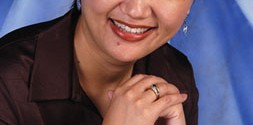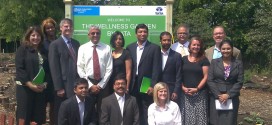By Andrew Ho and Virginia Cheung

As the holiday season approaches, what is your priority on charitable giving this year? Though imaginations run wild when we think of gifts to give to ourselves, charitable giving is lucky to have a fraction of our creativity. A modest donation to our alma mater, the local community group or a religious center is about as far as most of us get. We rarely think beyond groups with which we have an affiliation. Are grassroots non-profits, which provide much needed services to the Asian American community, on your radar? If not, could it be because we don’t stretch ourselves beyond our comfort zones and immediate social circles to consider how we might have a greater social impact through our charitable giving?
Recent research showed that those in the bottom 20% in income gave proportionally more than those in the top 20% of income. The conclusion was that insulation from people in need was a cause in the lack of charitable giving, relative to the poor. It cites Washington, D.C as an example:
“Middle- and lower-income neighborhoods, such as Suitland and Capitol Heights in Prince George’s County, gave proportionally more than the tony neighborhoods of Bethesda, and McLean. Researchers also found differences in behavior among wealthy households, depending on the type of neighborhood they lived in. Wealthy people who lived in homogeneously affluent areas—areas where more than 40 percent of households earned at least $200,000 a year—were less generous than comparably wealthy people who lived in more socioeconomically diverse surroundings. It seems that insulation from people in need may dampen the charitable impulse.”
This lack of exposure to need is also true of many financially successful Asian Americans. The process of achieving the American Dream often isolates us from people that could use some help to do so. For those of us who live in affluent areas, it takes particular motivation and action to continually extend ourselves and connect with the people who live in poverty. Unfortunately, many in the Asian American community are unaware that the Asian immigrant struggle exists in the DMV. A recent report documents that “nearly 110,000 Asian Americans in the Washington, DC [area] are low-income. Asian Americans are proportionately more low-income than whites (16% versus 12%).” Needs around language access, health disparities, and access to quality education opportunities for children are just some of the needs impacting the local Asian American community.
Two groups we volunteer with locally are seeking to meet these needs. The Cherry Blossom Giving Circle is a group of volunteers committed to pooling our charitable resources to support Asian American‐serving nonprofits in the area. Over the last four years the giving circle has donated over $37,000 to 11 such organizations. It’s a great way to learn about the needs in our community, and build relationships with others in the process. Another organization having an incredible impact in the community is Asian American LEAD. AALEAD supports low-income and underserved Asian Pacific American youth with educational empowerment, identity development, and leadership opportunities through after school, summer, and mentoring programs. It has reached thousands of Asian American youth over its 16 years of operation and continues to make a difference.
This holiday season, we encourage you to “stretch” and take action. Give as generously as you are able to and support the local low income Asian American community. If Asian Americans don’t support Asian Americans, how can we ask others to do so? You can start to identify local nonprofits serving the Asian American community through the free Connect! Guide, produced by Asian Americans/Pacific Islanders in Philanthropy (AAPIP), a national organization that seeks to build philanthropy within our communities. In 2015, make a resolution to contact a non-profit and ask if it’s possible to visit. Listen and observe. Once you see a non-profit in action, there will be a better understanding of its work and impact on the community. You will be surprised by what you learn.
Andrew Ho is a Contributing Editor to Asian Philanthropy Forum and co-founder of the Cherry Blossom Giving Circle. Virginia Cheung is a board member of the Community Foundation for the National Capital Region, Asian American LEAD, and Jade Philanthropy Society. The opinions expressed are those of the authors.


 Asian Fortune Your source for all things Asian American
Asian Fortune Your source for all things Asian American


